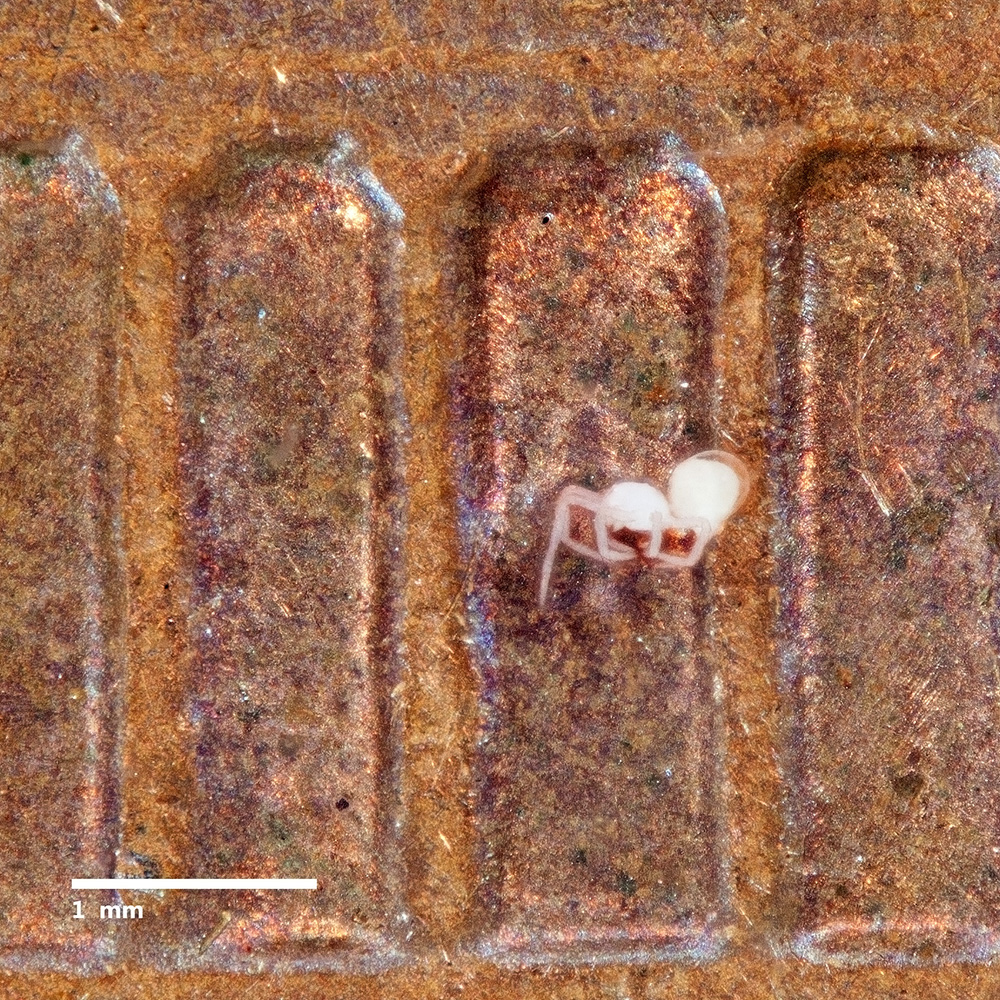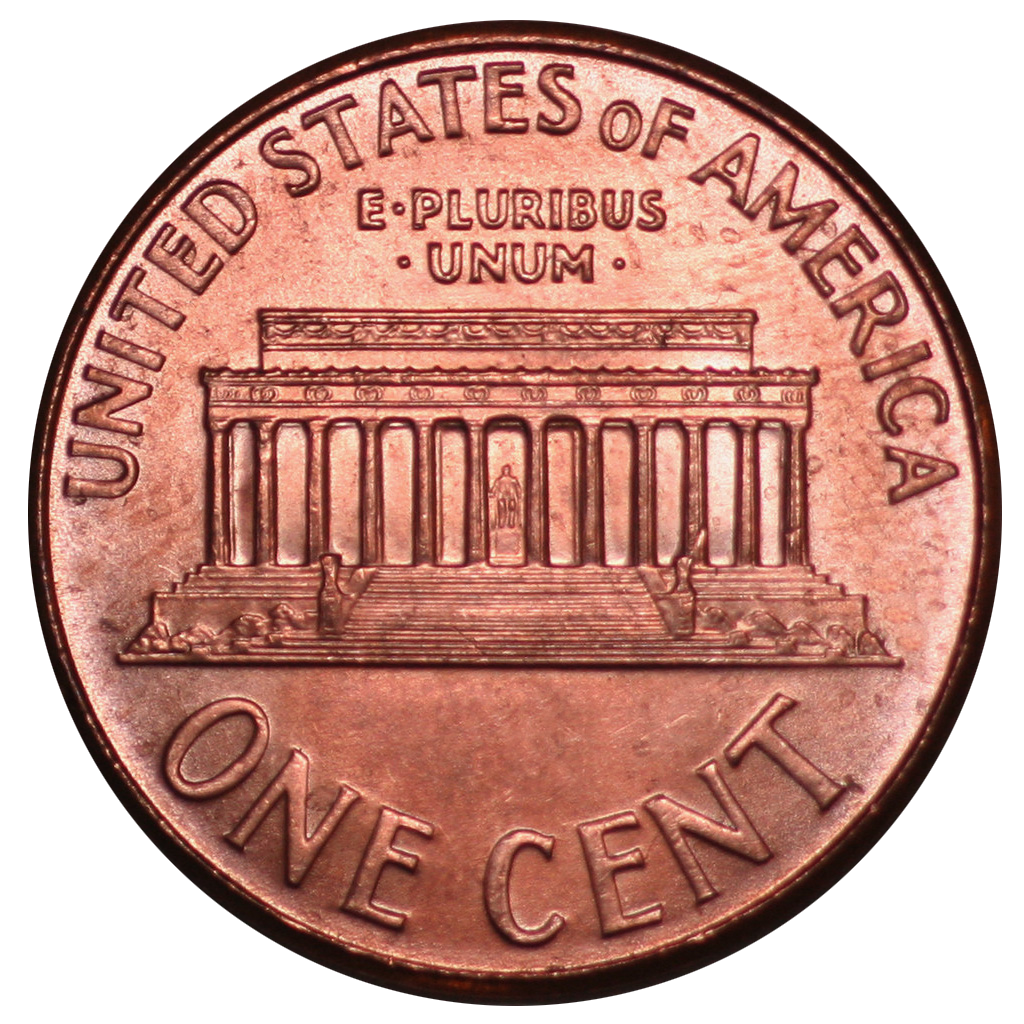Toby Hays, an Evolutionary Biology graduate student, enjoys observing small animals that he encounters. However, he usually doesn’t anticipate seeing unique species in suburban settings. Recently, while flipping stones outside the SDSU Biodiversity Museum Genomics lab, in the Mediterranean Garden, a delicate pale-white spider caught his eye. Its tiny size was notable, less than the size of a pinhead.
Strangely, the spider also appeared to lack pedipalps, the “boxing gloves” in front of a spider’s face. Intrigued, Toby collected the specimen, and upon viewing through a microscope, saw that in addition to lacking pedipalps, it possessed only four eyes. As we all know, most spiders have eight eyes.

Anapistula specimen photographed using a “Lincoln Memorial” American penny as a backdrop.

This detective work led Toby to identify the specimen as a female Anapistula, a rarely encountered genus of diminutive orb weavers. These are orb weavers like Charlotte’s Web spiders, only very, very small. This family of spiders, technically called symphytognathids, includes the world’s smallest known spiders. A species called Anapistula secreta is the smallest species in North America. Members of this group build small horizontal orb webs in humid places, but much of their lifestyle remains unknown due to their small size and cryptic habits. Previously, Anapistula was known from the southeast US, south to Columbia. Toby’s specimen appears to be the first record of the family (and genus) in California!
This is a great example of how careful observation can lead to intriguing discoveries in seemingly unlikely places. Additionally, this observation and specimen underscores the significance of Natural History Collections as important repositories of biological data. The collected specimen now provides a unique source of information for future research. And from such an unlikely place!

